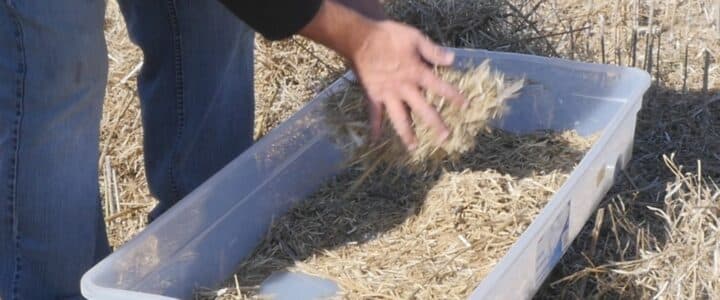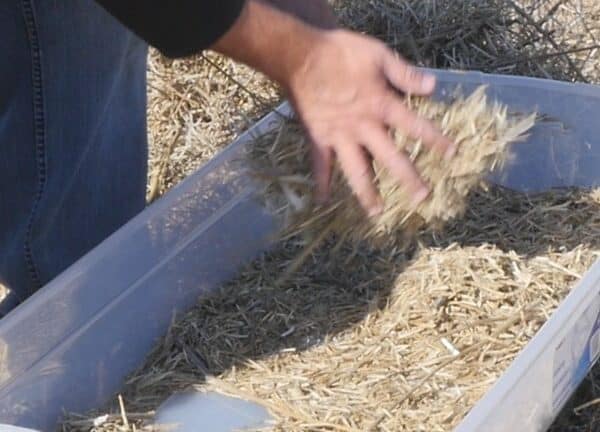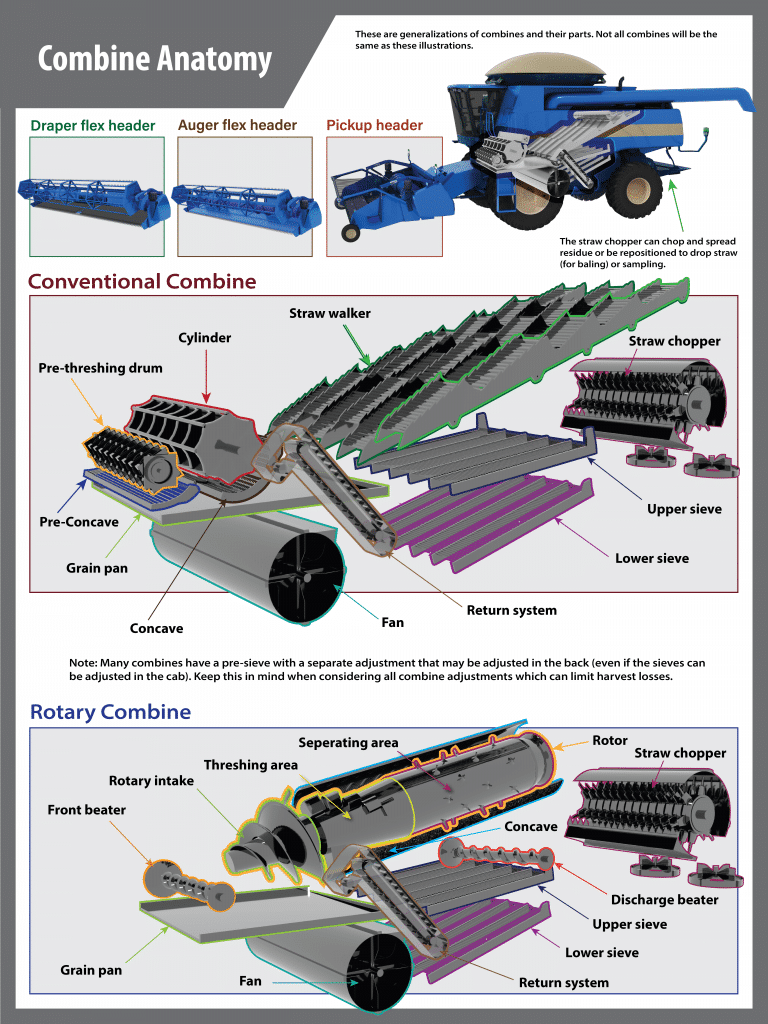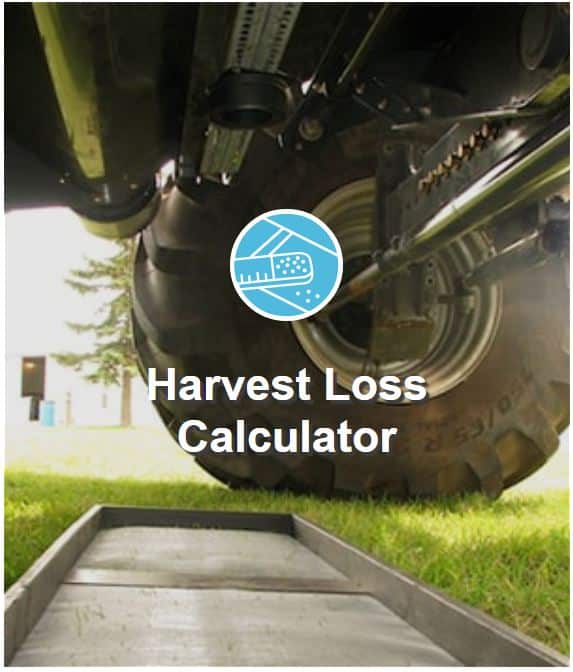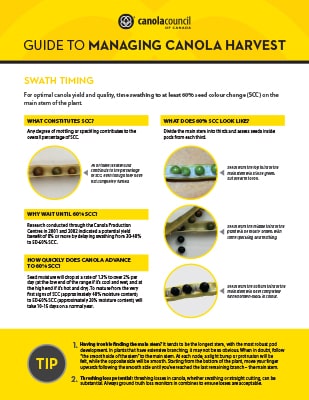Efforts toward genetic improvements, equipment improvements and more specific harvest timing all help maximize canola yields at the end of the growing season. Research on these advances and investigations are summarized in this blog, along with some resources and tools to help growers and agronomists integrate them on farm.
Genetic and crop timing considerations
Straight combining was still in early stages of being adopted in 2011, when Holzapfel’s ‘Quantifying genetic difference in seed losses due to pod drop and pod shattering in canola‘ project began, in hopes to contribute to more knowledge to successful straight combining of canola.
The objectives of this research were to:
- Quantify relative resistance to yield loss due to pod shatter and pod drop amongst a wide range of straight combined B. napus varieties.
- Evaluate the overall risk of environmental yield loss in straight combined canola, particularly in cases where harvest is delayed.
- Quantify environmental seed loss contributions from pod drop versus pod shatter in B. napus canola.
Yield losses due to pod shatter and pod drop in field trials were examined at optimal harvest stage (seed dried to 10-12 per cent moisture content with two or less green seed) and delayed harvest dates (3-4 weeks after optimal timing) for fifteen canola varieties (which had 90 to 106 day maturities) at four Saskatchewan locations (Indian Head, Scott, Swift Current and Melfort) over four growing seasons (2011 through 2014).
Averaging 42% overall, pod drop was an important contributor to environmental seed losses in this study, but
also largely affected by environment ranging from 12-60 per cent at individual sites.
Apply this research on your farm
- Shatter resistance can allow for late harvest options – but still consider other factors when making seed selections.
- Extendable knife and draper headers can help reduce header losses for straight combining canola, compared to rigid headers.
- Checking for harvest losses and adjusting the combine can quickly boost crop revenues.
- Explore CanolaHarvestManagement.ca for tips and supporting tools.
Key findings from this research include:

- Overall, environmental conditions had a large effect on yield losses and were generally of greater importance than varietal differences within any given site.
- Though varietal differences in resistance to pod drop and pod shatter were observed, this may be predominantly due to the stability of varieties across varying environmental conditions (the genotype by environmental interactions).
- Yield losses with straight combined canola are unlikely to exceed 10 per cent even with minor delays in harvest, under normal environmental conditions, according to the trials completed.
- Varieties harvested at optimal timing had less than five per cent losses compared to the sites harvested three to four weeks later, which reported an average yield loss of 15 per cent across all site years and varieties.
- In fact, 25 to 50 per cent of these yield losses were generally the result of pod dropping (not pod shattering).
- Varieties with pod shatter tolerance exhibited the lowest percent losses at five of the six sites.
In-field applications
- As long as harvest wasn’t delayed too much past optimal straight cut timing, losses from straight combining any varieties shouldn’t be significant under normal environmental conditions. Of course, completing harvest as close to optimal timing as possible will help minimize loses while straight combining canola.
- Although new shatter tolerant varieties have excellent potential for straight combining, pre-season variety selection considerations should still include: yield potential, days to maturity and herbicide system rotation (as well as harvest timing).
Learn more about canola pod drop and pod shatter video and at CanolaHarvestManagement.ca.
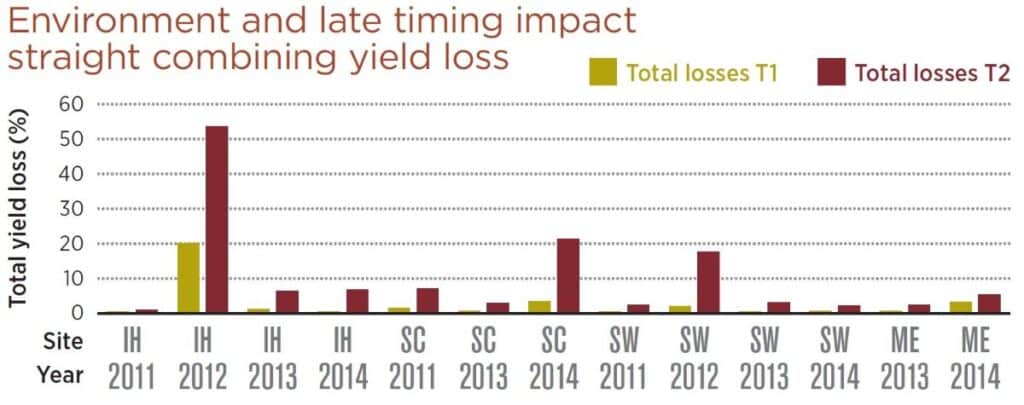
Improving straight cut methods
In the three-year ‘Canola direct-cut harvest system development‘ study (2014-16) at three Saskatchewan sites (Swift Current, Indian Head and Humboldt), three header types for straight combining canola (rigid auger, draper and extendable knife) were compared. Treatments also included a swathed check. Canola strips were harvested in a randomized split-block design using a standard and a shatter-resistant canola variety. Data collected included header loss, yield and seed quality.
Results
- Header losscomparison
- The rigid header had the highest losses overall, and was the worst for losses in the middle of the platform.
- Extendable knife and draper headers had lower losses in the middle of the platform.
- All three straight cut headers had fairly high losses at the crop dividers.
- Vertical knife and fixed dividers had lower losses than the rotary knife divider.
- Yield impact
- High variance in canola yield between site years was likely largely due to variety choice and environmental conditions.
- None of the header types had the highest average yield in all situations, and the study found no consistent yield benefit of straight cut compared to swathed treatments.
- Seed quality
- Generally favourable conditions at Indian Head for all three years likely resulted in desirable seed moisture, green content, seed weight and oil content for all treatments, while environmental challenges at Swift Current in 2015 and 2016 meant the crop was harvested tough and with higher green counts.
- Swathed canola had lower seed moisture than straight combined canola, based on Swift Current results averaged over three years, but straight combined canola had lower green seed counts, higher seed weight and higher oil content.
Conclusions to implement on farm
- Choose extendable knife and draper headers over rigid headers to reducing header losses for straight combining canola.
- Select the harvest method that best suits your field (as one harvest method won’t produce the greatest yield in every instance). Swathed canola produced better yield in some site years in this project and straight combined canola yielded better in others.
- Growing a shatter-resistant variety will mitigate risk under ideal and adverse environments, and is likely more significant than header choice for successful straight combining of canola.
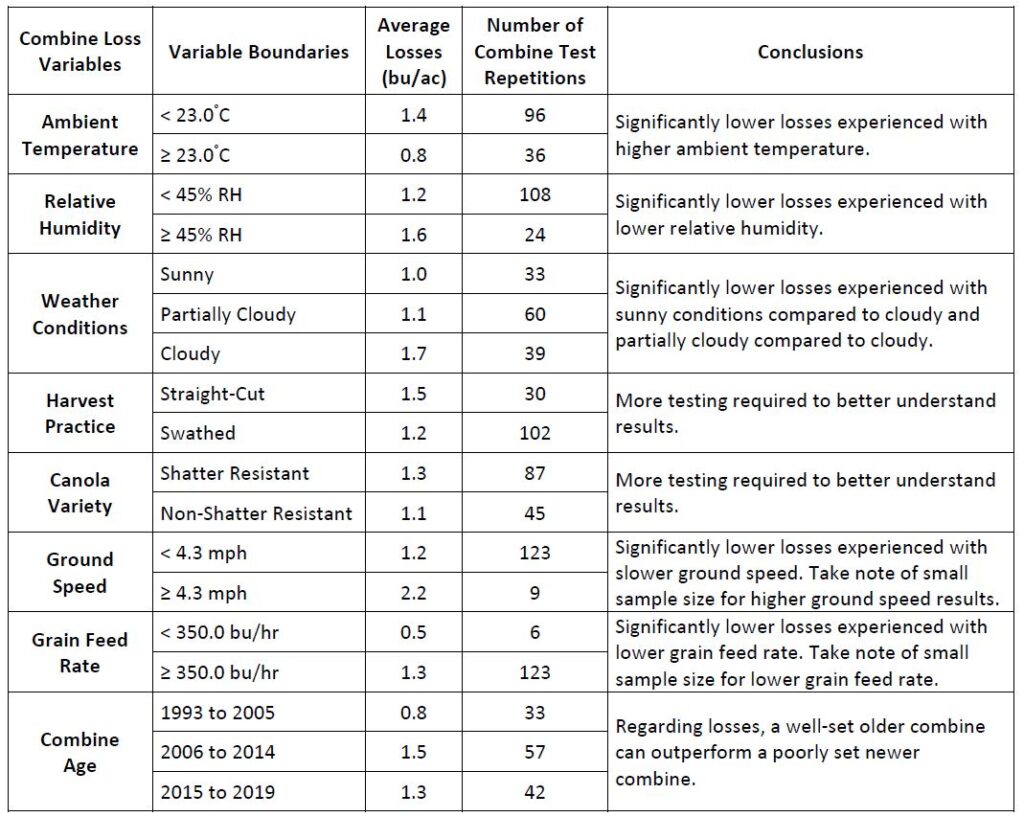
Canola harvest losses across the Prairies
In the ‘On-farm survey of combine grain loss in canola across Western Canada‘ project, PAMI visited 31 producers across Alberta, Saskatchewan and Manitoba, and measured canola combine losses in-field from 50 combines (which represented six combine manufacturers and 40 different combine models). Drop pans provided by Bushel Plus and Schergain were used to measure (three replicates) of the combine losses when producers ran machines at their normal operating speed and conditions.
The variables investigated to determine their potential impact on combine losses were: harvest timing, ambient temperature, relative humidity (RH), weather conditions, wind conditions, harvest practices (straight cut, swathed), grain moisture content, canola variety (shatter resistant, non-shatter resistant), ground speed, grain feed rate, combine settings, combine age, and separator hours.
Variables that were found to have a significant impact on canola combine losses during the 2019 combine loss testing are shown in the table. No significant differences were observed on all other variables investigated.
Results to apply on farm
The age of the combine doesn’t necessary impact canola harvest losses, based on the results. A well-set older combine can outperform a poorly set newer combine, in terms of losses.
Canola harvest losses were significantly lower with:
- higher ambient temperature.
- lower relative humidity.
- sunny conditions compared to cloudy and partially cloudy compared to cloudy.
- lower grain feed rate (but a small sample size was used for higher ground speed results, so more investigation is required).
- slower ground speed (but a small sample size was used for higher ground speed results, so more investigation is required).
More testing required to better understand the impact of harvest practice (swathed or straight cut) and canola variety (shatter-resistant or non-shatter resistant) on harvest losses.
Economics of harvest losses
- The average combine loss was 1.3 bu./ac., or 2.8 per cent of yield.
- The estimated financial losses to producers with average losses (1.3 bu/ac), across 70,400 canola acres, who is selling at a canola price of $9.50/bu is $870,000 or $12.35 per acre.
- The minimum loss measured was 0.2 bushels per acre (bu./ac.), or 0.4 per cent of the producer’s yield
- The maximum combine loss measured was 4.1 bu./ac., or 10.7 per cent of the producer’s yield.
Conclusions
This project highlights how important it is for producers to set their combines for current weather conditions and to use loss measurement as a way of verifying these settings. Producers also need to reassess combine losses as conditions change throughout the harvest day and season.
Tools and resources to help at harvest
Using these tools can make choosing ideal swath timing, calculating harvest losses and optimizing combine operations easier:
Canola Watch features timely, research-focused content, quizzes, podcasts, webinars and more for farmers and agronomists:
- QUIZ – Straight combining
- Podcasts:
- Fundamentals articles:
- Webinars:
Additional harvest-related studies
- Pre-harvest herbicide and desiccation options for straight-combining canola: Effects on crop dry-down and seed quality
- Evaluation of harvest losses and their causes in canola across Western Canada
- Developing methods to estimate pod drop and pod shatter in canola
- Developing Brassica napus lines with reduced pod shattering
- Investigation into converting a combine grain-loss signal into a grain-loss rate
Published September 2, 2022


